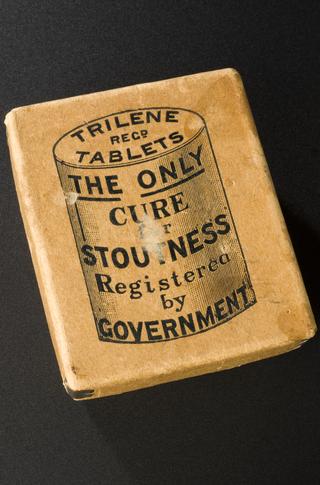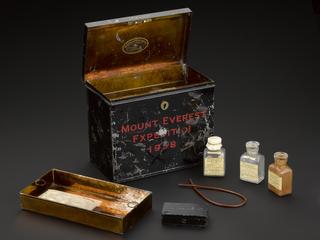

Cylindrical red clay terra sigillata, inscribed, possibly from Hungary, 1301-1700
Terra sigillata, or “sealed earth”, was a clay-like soil believed to have medicinal qualities which was first used on the Greek island of Lemnos in around 500 BCE. It was usually prepared into cakes which were stamped with a seal of authenticity and then dried.
The clay was crushed into a powder and taken with liquids or made into a paste and smeared on the body. Terra sigillata was believed to fight against a number of diseases including plague and was highly sought after during epidemics. An increased demand needed an increased supply and sources were found in Hungary, France, Germany, Malta, Sienna and Silesia. This example is probably from Hungary. Unfortunately, due to wear over time the stamped inscription cannot be read. It is shown here with two other examples (A656695 and A656712).
Details
- Category:
- Materia Medica & Pharmacology
- Collection:
- Sir Henry Wellcome's Museum Collection
- Object Number:
- A656687
- Materials:
- clay
- Measurements:
-
overall: 15 mm x 20 mm, 0.008 kg
- type:
- terra sigillata
- credit:
- Hartwich, C.



